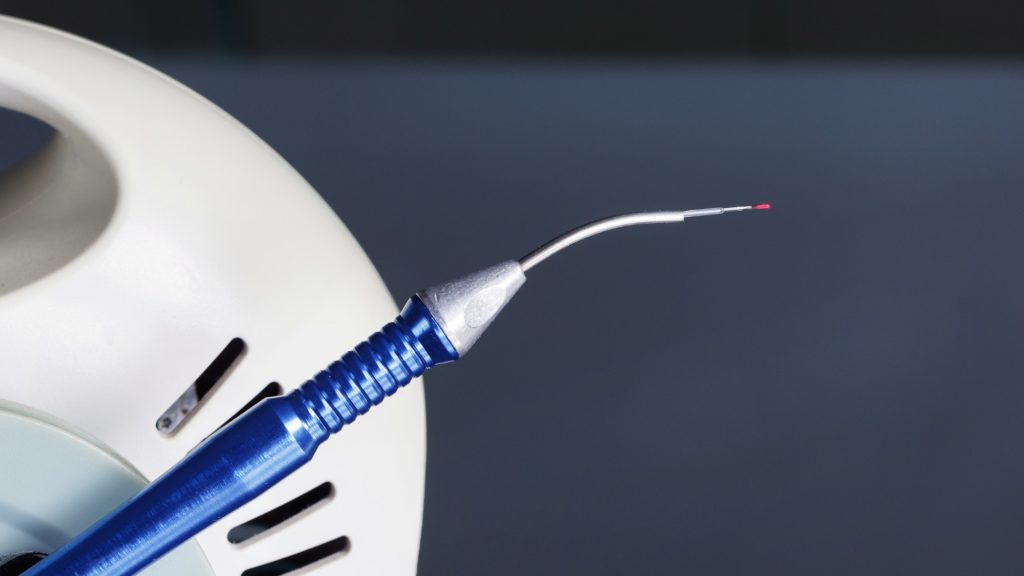Anal fissure laser treatment: Procedure & Benefits
An anal fissure is a small wound or tear in the lining of the anus that lines the outside of the anal opening. This condition is quite unpleasant, as it can cause itching, pain and bleeding during bowel movements. It is caused by some injury to the area, often due to the passage of hard stools. Chronic constipation, diarrhea, inflammatory bowel diseases such as Crohn’s disease increase the likelihood of developing the condition. The presence of the wound and the pain it causes in several cases cause contraction of the anal sphincter muscle, which inhibits the healing of the fissure. Anal fissures are effectively treated with laser application, a treatment that is now the recommended and most effective method of treating the condition.

dental laser and special tip for surgical procedures
Anal fissure: Clinical picture, symptoms & diagnosis
Anal stretch marks can extend to both sides. Either upwards, affecting the lower rectal mucosa, or downwards, leading to the appearance of a swollen skin infection at the end of the anus. An anal fissure can heal on its own within 4-6 weeks. In case it does not heal within 2 months, patients are advised to visit the doctor immediately and surgery may be needed to permanently treat the condition.
This particular condition occurs quite often in young infants, as at this age the stools often have a hard consistency, but in general it can appear at any age. Symptoms of the condition include severe pain during bowel movements or bowel movements, which can last up to several hours afterwards, bleeding, itching, irritation and discomfort around the anal area. Several patients may also notice a crack or tear around the skin of the anal area. The diagnosis of anal fissure is carried out through a clinical examination of the anus area, but also with digital methods such as digital rectal examination and proctoscopy.
Laser treatment for an anal fissure
An anal fissure can be treated initially with conservative measures. These include changing dietary habits by consuming more fiber and drinking plenty of water, while avoiding alcohol is recommended. The application of topical ointments and the administration of medicines, the avoidance of staying in the toilet for a long time and physical exercise are indicated.
The most effective treatment method for anal fissure is surgery, which patients resort to when conservative treatment methods fail. Surgical techniques include the classic surgery with lateral medial sphincterotomy, or the newer and painless method where the anal fissure is treated using a laser.
Η χειρουργική θεραπεία ραγάδας πρωκτού με λέιζερ αποτελεί μια από τις πιο αποτελεσματικές τεχνικές για οριστική ίαση της πάθησης, την οποία εφαρμόζουν επιτυχώς οι General Surgeons in Athens. Treatment of anal fissure using laser is one of the important methods. This particular method is preferred as through the special laser fiber the fissure is cleaned and the symptoms are effectively relieved, without injuring the anal sphincter muscle.
The advantages offered by anal fissure laser treatment include faster recovery, significantly reduced post-operative pain, and the patient can return to their daily activities from the very next day. He is discharged the same day, and does not need to follow a specific diet after the operation, nor undergo regular medical monitoring. Laser anal fissure treatment can be applied to patients of all age groups. In advanced cases, where a spasm of the anal sphincter muscle occurs, a lateral medial sphincterotomy in combination with laser therapy is indicated to relieve the painful symptoms.

